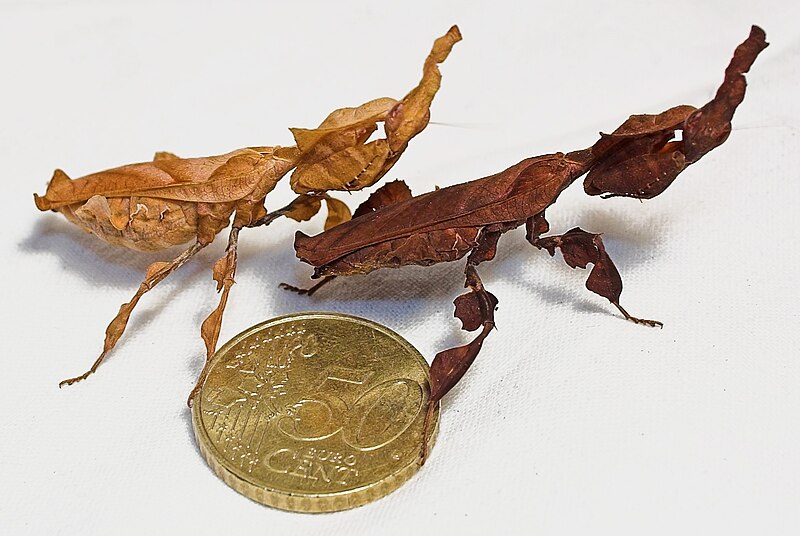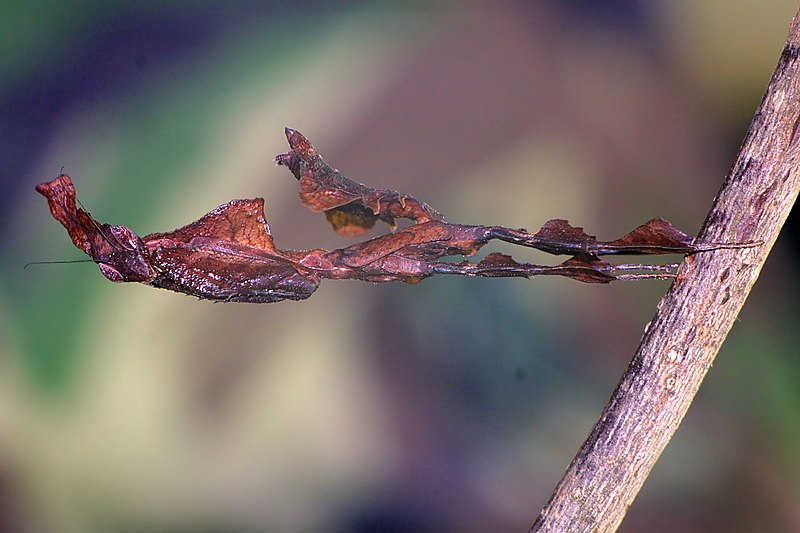This species is characterized by brilliant coloring and a structure finely adapted for camouflage, mimicking parts of the orchid flower. The four walking legs resemble flower petals,[1] the toothed front pair being used as in other mantises for grasping prey.
H. coronatus shows some of the most pronounced sexual dimorphism of any species of mantis; males can be less than half the size of females.[2]
First stage nymphs mimic bugs of the family Reduviidae, which have a powerful bite and are foul tasting.[3]
The mantis can change its colour between pink and brown, according to the colour of the background.
Excerpt from Wikipedia.


Phyllocrania Paradoxa - Ghost Mantis
Compared to many other praying mantises, the Ghost Mantis is a "miniature species"[3] growing to only about 45 to 50 millimetres (1.8 to 2.0 in) long.[2]
It comes in various brownish shades from very dark brown (almost black) to greenish gray. An individual's colors change between molts and are also dependent on light and humidity levels.[2][3]
Phyllocrania paradoxa is camouflaged so as to appear as dead, dried-up leaf material.[5] It has an elongated head, a flattened, extended prothorax (together referred to as its "elaborate headdress and shoulder shields" by one enthusiast),[4] and leaf-like protrusions from its limbs.[5] The mantis also has a forewing that looks like a desiccated leaf,[1] and the "creases" in the wings are actually shadings of pigment.









